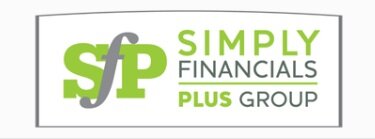As a business owner, it is important to know to whom you owe monies and when payment is expected. Defined as accounts payable, this is the amount of money you owe to vendors or creditors for the goods and services they have provided to you in your business. The sum of the invoices you owe makes up your total accounts payable on your business balance sheet. This amount will be listed as a liability, as it is money expected to flow out of your business within a certain time and is dependent on the payment terms established with your creditors and vendors.
Establishing best practice processes for your accounts payable, from the initial handling of the actual invoice through to processing and approval, will save you time and money, reducing unnecessary costs (such as interest and late fees) and increasing your operational efficiency. It will also ensure you have the proper controls in place to protect you against potential fraud. In addition, successful business owners know that well-managed accounts payable is one factor that leads to positive cash flow, an important key performance indicator for any business.
Do you need some guidance on best practices for managing your accounts payable? Here are 5 recommendations we have to get you started:
#1: Establish a streamlined workflow process
Having a system for the organized receipt and payment of bills is important to effective cash flow management and control. Your workflow should establish such policies as where and how you receive invoices, how you ensure their accuracy, who approves invoices for payment, and how payment will occur.
#2: Automate with technology
Look for possible opportunities to eliminate manual entry of invoices and receipts, and processing of payment. There are several cloud-based applications available that integrate with accounting software such as QuickBooks. Use a service such as AutoEntry to automatically enter data from scanned and photographed documents, or tools such as Melio and Bill.com to make payment processing easier.
#3: Create a paperless environment
Look at creating the ability to store documents digitally. Accounting software solutions, such as QuickBooks, let you attach invoices directly to your bill entry, saving you time if you need to access them in the future. Using Google Drive as your virtual file cabinet also makes bill storage easy.
#4: Establish internal controls
Establish separation of duties and internal controls within your accounts payable process to the extent possible. Separating duties between receipt of invoices, goods and services, approval and processing for payment is important to minimize the potential for fraud.
#5: Review accounts payable data regularly
Use an Accounts Payable Aging report to monitor what you owe others. Knowing what you owe and timing of payments to be made will allow you to control and improve your business cash flow. In addition, consistent monitoring of vendors and payments will reduce the potential for fraud. It is also useful to look at large, or unusual amounts owed or paid and review reports for potential duplicate payment.
Regardless of the size of your business, establishing some of these accounts payable practices will save you time, money, and ensure you have proper controls. In addition, you will be able to better optimize your business’s financial health by effectively managing your cash flow.
For some business owners, it may be challenging to set up best practices and manage them. SIMPLY Financials PLUS works with businesses on setting up best practice solutions utilizing QuickBooks and other available 3rd party applications.
Contact us today at SIMPLY Financials PLUS to learn more about what we can do for your business!
